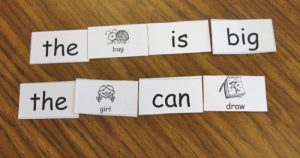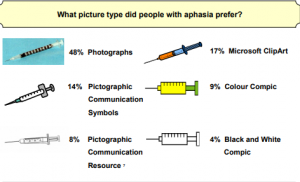Functional Reading Ideas in Aphasia
Functional Reading Ideas in Aphasia
What is Functional reading?
All of us use functional reading skills in our day to day lives. These are the common words that occur in one’s vocabulary. When we say the word “Hello”, it is not really us reading the word. This word is used so frequently in our lives that the moment we lay our eyes on the word, we can immediately say it aloud without much thought. It’s almost as if the words are memorized & present at the back of our minds isn’t it? Yes!! That’s exactly what these words are. These kinds of words are called ‘sight words’. We don’t read such words letter by letter, but because that word is so commonly used, at the first sight we are able to understand it. It is because of this very reason that functional reading is very important.
What is Aphasia & how is functional reading affected in those with Aphasia?
Reading skills is commonly affected in individuals with Aphasia. These skills when affected, can affect social participation. The reading deficits vary from person to person. It also depends on how severe the Aphasia is. Some people lose the ability to read sight words such as environmental signs (e.g., exit, restroom, stop, etc.). Others may maintain the ability to read aloud; but, they may not understand what they are reading.
So what can be done to improve on functional reading skills?
Individuals with Aphasia require a lot of training & assistance when learning. The following are some ideas that will help to improve on functional reading skills in Aphasia.
- FlashCards
When you ask a person with Aphasia to read, write the words on flashcards. In this way, they will be reading only one word at a time. Pick the words that are relevant to the person with Aphasia. Use words related to their family, jobs, hobbies, etc. You can start off by showing a card of an apple & saying the word “Apple”. Then, ask them to point & repeat it after you. Present the word frequently till they get it correctly. Present one flashcard at a time. After some practice, you can lay down the two cards & repeat them the same way. Mix it up & pick up random cards once you have practiced every card in the set.
-
Simplified Vocabulary
When using words, keep them simple. Use the word “Happy” instead of its synonyms like “contented”, “ecstatic” “elated” etc. Use simple vocabulary. It is easier for persons with Aphasia to memorize these words. Thus the word recall time is faster. Once the client is able to recognize this simplified vocabulary, then you can move forward & start off practice with more complex words.
-
Simplified Sentence structure
Words can be used in sentences. Once the person with Aphasia is able to recall the targeted words, they can be used in simple phrase/ sentence combinations. For example, “How are you?” is a sentence so commonly used but a simple one. These kinds of sentences are easy to read & recall. Using pictures or emoji’s along with this will serve better reading skills.

-
Photographs, Pictures, Drawings, and Emoji’s
Photographs can be used along with written words. Persons with Aphasia better understand when real-life images are used. When you use these pictures, it helps in better memorization of the words with the pictures. A person with Aphasia learns to associate a visual image along with written words. These also act as visual supports with the word. You can also use drawings or emojis.
-
Font size, spacing, and case
When the font size increases, it becomes easier for persons with Aphasia to read the text. Research has suggested that a font size of 14 and font types like Arial Verdana were most preferred. In addition to that, a line spacing of 1.5 was found to be the easiest to read. Also do not use words that are block capitals. This causes a visually different shape and it is difficult to read.
For more information on text preferences: http://www.aphasiapathway.com.au/flux-content/aarp/pdf/Aphasia-Friendly-Text-formatting.pdf
-
Usage of headlines & categories
Use headlines and categories in text. When you make headlines, it helps in better reading. It draws one’s attention towards the important sections of the reading. Also, make sure the headlines are in bold. Do not use bold texts frequently as this may seem that you’re shouting in the text. Only the important words/headlines must be in bold.
For some apps on Aphasia & Reading: https://1specialplace.com/2020/12/31/best-apps-for-people-with-aphasia/
Book your online consult: https://1specialplace.com/services/online-therapy-services-for-adults/
- Tips to Promote School Readiness - February 28, 2023
- Baby Sign Language - February 24, 2023
- Summer Speech Activities for Children - February 21, 2023





Leave a Comment
(0 Comments)